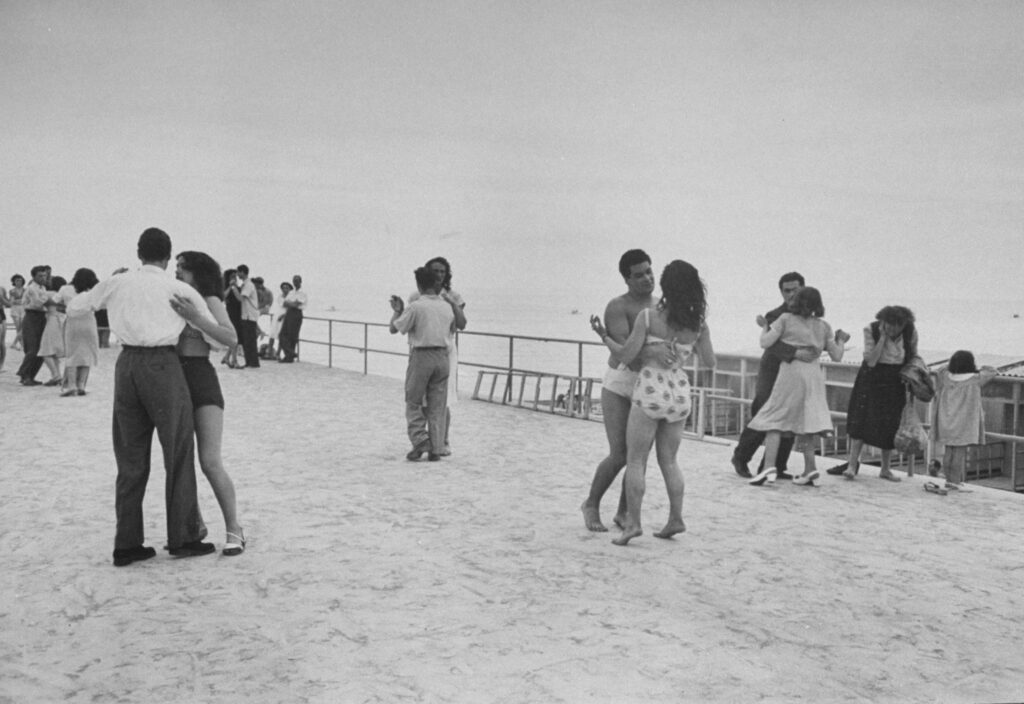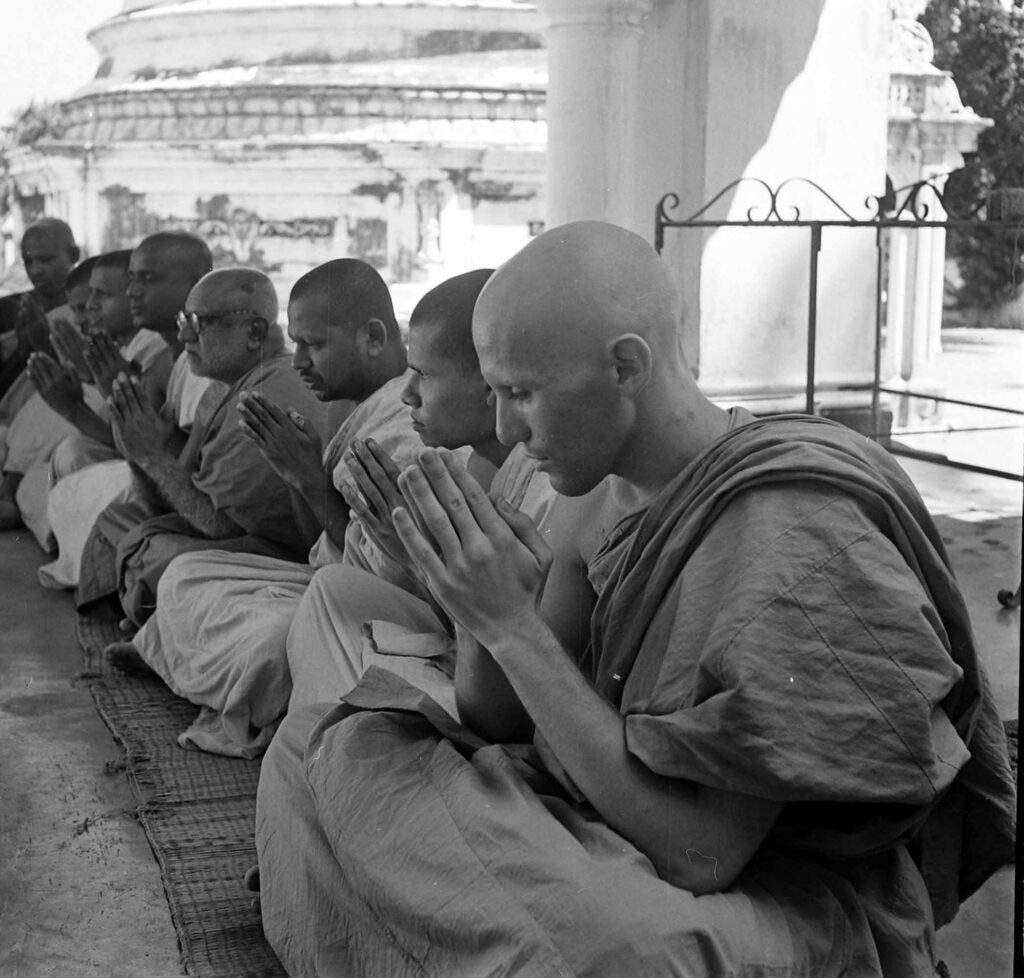Big Sur, located on the Central California coast, has been a touchstone of alternative culture for decades. In the final episode of the television show Mad Men, Don Draper is at a retreat in Big Sur when he achieves his climactic moment of enlightenment (which turns out to be an idea for a Coke ad that commercializes 1960s idealism). Today Big Sur is still home to plenty of resorts and retreats, including the storied Esalen Institute, which offers self-improvement workshops galore at its cliffside perch overlooking the Pacific Ocean.
When LIFE magazine visited Big Sur in 1959, the Esalen Institute was three years from opening, but the coastal community had long been attracting free-thinking types. LIFE’s story was headlined “Rugged, Romantic World Apart: Creative Colony Finds a Haven in California’s Big Sur,” and it offered an explanation of how Big Sur gained its bohemian character:
In 1944 Henry Miller, the once-expatriate novelist whose most famous works (Tropic of Cancer, Tropic of Capricorn) are banned in the U.S. as pornographic, settled in Big Sur. Around him, living in tents and shacks, clustered a coterie of young rebels who seemed bent on creating what one reporter called “a cult of sex and anarchy.” But the rigors of Big Sur living eventually drove most of the rebels to more easeful surroundings. In their place came a calmer breed; dedicated craftsmen who find they work best far from the urban rat-race; others, still more conventional, who have retired, young and old, to Big Sur’s tranquility.
LIFE’s story is richly illustrated with photos by J.R. Eyerman, and to today’s viewer it can be remarkable how stately most the images are. Sure, Eyerman photographed a few skinny dippers by the shore and captured an outdoor art class drawing a nude model. He also shows a man teaching yoga to his neighbors long before that practice became popular.
But Eyerman’s other photos from Big Sur have a Norman Rockwell-like gentility. A group of musicians play chamber music at home. A retired magazine editor enjoys tea with his friends on the terrace. A group of men gathered at a bar are mostly wearing coats and ties. Granted, one of those men is the aforementioned literary rebel Henry Miller (whose years at Big Sur are commemorated there at the Henry Miller Memorial Library—which is proudly not banning any books on its shelves).
But even the famously licentious novelist told LIFE that BIg Sur at its best was a a place “of grandeur and of eloquent silence.” If there is a common theme to Eyerman’s pictures beyond their location, is it quiet pleasure—the kind that continues to draw visitors to this coastal spot.

Big Sur, California, 1959.
J.R. Eyerman/Life Picture Collection/Shutterstock

Douglas Madsen (rear), a sculptor, instructed his neighbors in yoga in Big Sur, California, 1959.
J.R. Eyerman/Life Picture Collection/Shutterstock

Writer Henry Miller, 67 (second from left), a longtime Big Sur resident whose presence helped lure others there, held court with friends (from left, poet Eric Barker, sculptor Harry Dick Ross, and archaeologist Giles Greville Healey) at the round bar of the Nepenthe Restaurant, 1959.
J.R. Eyerman/Life Picture Collection/Shutterstock

Seating on fallen trees, a group of children listened to 80-odd year old Susan Potter recount tales of Irish folklore, Big Sur, California, 1959.
J.R. Eyerman/Life Picture Collection/Shutterstock

The Hermits of New Camaldoli, a Roman Catholic order dedicated to the arts, set up their first monastery outside Italy in Big Sur, 1959.
J.R. Eyerman/Life Picture Collection/Shutterstock

A weekly figure drawing class met outdoors at Lafler Canyon in Big Sur, 1959.
J.R. Eyerman/Life Picture Collection/Shutterstock

Retired American magazine editor and publisher (of Collier’s) William Ludlow Chenery (center) and his wife Margaret shared tea with their guests on the patio of their home in Big Sur, California, 1959.
J.R. Eyerman/Life Picture Collection/Shutterstock

Author and former diplomat Nicholas Roosevelt (left, rear) played cello as he led a chamber music session at his home, Big Sur, California, 1959.
J.R. Eyerman/Life Picture Collection/Shutterstock

At her Big Sur studio American mosaic artist Louisa Jenkins planned out designs for the ceiling of St. Anne’s Chapel in Palo Alto, 1959.
J.R. Eyerman/Life Picture Collection/Shutterstock

Sam Hopkins, 43, rejected the socialite world he grew up in and moved his family to Big Sur, California, 1959.
J.R. Eyerman/Life Picture Collection/Shutterstock

Diners watched dancers on the patio of the Nepenthe Restaurant, Big Sur, California, 1959. The restaurant opened in 1949 after the building was purchased from actors Orson Welles and Rita Hayworth, who had used it as a cabin.
J.R. Eyerman/Life Picture Collection/Shutterstock

Big Sur, California, 1959.
J.R. Eyerman/Life Picture Collection/Shutterstock

Big Sur, California, 1959.
J.R. Eyerman/Life Picture Collection/Shutterstock

A van drove on the Pacific Coast Highway in Big Sur, 1959.
J.R. Eyerman/Life Picture Collection/Shutterstock






















